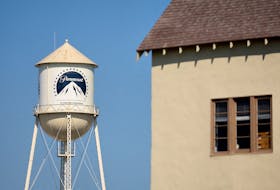
CORNER BROOK — A geoscientist searched the world for gold, but it’s here in his native land where he may finally unearth it.
Terry Christopher, president and CEO of Empire Capital Corporation — a five-month-old company he founded based in Bedford, N.S. — has been searching in Newfoundland for what is known in the business as the “golden elephant.”
“If you hear someone saying their looking for the elephant, that means, a big, big, deposit,” Christopher said.
Empire Capitol has started a geophysical program that will determine if it’s worth mining for gold at Wings Point, which is in northeastern Newfoundland on the west of Gander Bay.
Christopher was born in St. Anthony. He graduated from Memorial University of Newfoundland with a PhD in geochemistry and geology, and he has spent more than 15 years in mineral exploration in Canada, Mexico, and United States.
From 2007 to 2010, he worked as chief geoscientist for Nayarit Gold, which was taken over by Capital Gold Corporation. It was when Christopher was with Nayarit, the company discovered several deposits, one of them being Del Norte Deposit. Prior to 2007, he spent three years at Linear Gold, now Brigus Gold, as chief geoscientist and manager of investor relations. He also worked with Rhino Resources.
A possible commercial deposit at Wings Point was discovered in the fall of 2010 when Empire Capital gathered samples. Christopher was in Africa when the company emailed him the data found in Newfoundland. He immediately returned home.
The potential just may be there he said. The area is being compared to the calcareous sedimentary rock found in Carlin Trend, Nev., which has produced over 50 million ounces of gold.
The rock samples on average returned assays of 1.0-3.0 grams per tonne of gold — with one assay with a high of 87 grams per tonne of gold.
“Geologicially it looks like the Carlin Trend, the mineralization looks like the Cralin Trend, but now what we have to do is test it with a drill and see how much is there,” said Christopher.
He said the work to determine if there will be a deposit worth pursuing will be concluded by the end of March, and then the company may commence drilling.








